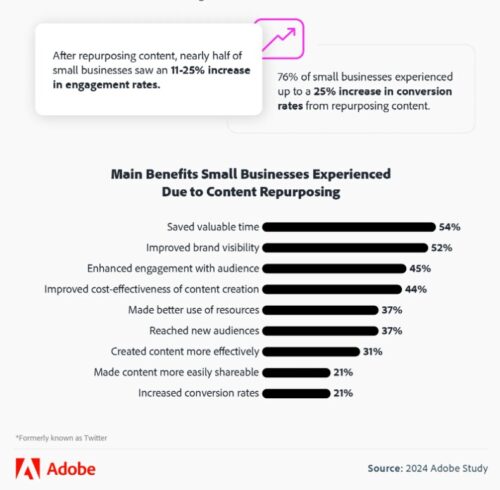If you’ve been emailing for more than a few months, you’re sitting on a goldmine: your own archive. Inside those past campaigns are proven hooks, angles, and offers that already resonated with your audience. With a thoughtful refresh, you can turn “old” into “high-performing” again. By that, you are also saving time, reducing creative lift, and boosting ROI.
Below is a practical playbook for breathing new life into past email campaigns: how to pick the right candidates, update design, tailor messages to current trends, segment audiences in smarter ways, and blend yesterday’s winners with today’s insights.
The Big Idea: Analyze → Refresh → Remix
Think of reuse as a simple loop:
- Analyze what worked (and what didn’t).
- Refresh the content and design for what’s true now.
- Remix the message for new segments, moments, or channels.
- Measure and document, so your archive gets even smarter.
Step 1: Mine the Archive for Winners
Start with a simple scoring pass across your last 6–24 months of campaigns. There, you should prioritize:
- Revenue per email (or goal completions per email)
- Click rate (less biased than open rate, given privacy features)
- Clicks by section (what blocks earned attention?)
- Reply & forward rate (for community and B2B content)
- Conversion lag (did sales happen days later after nurture?)
Next, flag the top 20% as “content refresh candidates.” Also note the “almosts” – emails with significant engagement but weak conversion. Those often become top performers with small tweaks. Maybe they need a clearer CTA, better offer framing, and an improved landing page match.
Pro tip: Don’t rely solely on opens! Treat them more as directional indicators, as clicks and downstream conversions tell the real story.
💡 To know what different indicators show and analyze them correctly, read our article “From Bounces to Opens: What Do My Email Marketing Metrics Show”.
Step 2: Update the Message for the Current Day
Even evergreen content benefits from a quick reality check. Adding fresh, relevant details can make the message more engaging and accurate for today.
Additionally, this prevents the embarrassment if someone realizes they’ve already read the content, which can lessen its perceived relevance and freshness.
- Reframe the “why now.” Tie your original benefit to current conditions (new industry data, seasonal mindset, budget planning cycles, product updates).
- Refresh proof. Update customer testimonials, case studies, and stats with current numbers.
- Tighten the CTA. Make the next step unmistakable and low-friction (e.g., “Get the template,” “Book a 15-min demo,” “See 3 examples”).
- Localize or personalize. Replace generic subject lines (and content all in all) with dynamic ones (considering industry, plan tier, location, use case).
- Legal & logistics. Security rules are constantly being updated. That’s why you should revalidate links, terms, pricing, and rights to imagery.
Example of a refreshed subject line:
🟨 Then (2023): “Grow your list with 5 simple lead magnets.”
✅ Now (2025): “List growth, minus ad spend: 5 proven lead magnets (with 2 new AI-assisted examples).”
Step 3: Modernize the Design (Fast)
Yes, it’s important to stay true to your brand’s voice, but some tweaks here and there, along with updates to how you message, show that your brand is moving with the times. A design facelift can lift engagement without rewriting from scratch. Here are some basic tips to consider:
- Mobile-first layout: One-column, 14–16px body, 44px+ tappable CTAs.
- Dark mode friendly: Higher contrast logos, transparent PNGs, and tested link colors.
- Accessibility: Real text (not text-in-images), descriptive alt text, 16:9 images for predictable scaling, 4.5:1 contrast ratio.
- Visual hierarchy: Clear headline, scannable subheads, bullet highlights, one dominant CTA.
- Speed: Compress images; avoid heavy GIFs where static wins.
Quick pattern: Hero (benefit) → 3 bullets (value) → social proof → single CTA.

Step 4: Tailor It to Trends (Without Chasing Hype)
You don’t need to rebuild, you need to re-angle.
- Seasonal reframes: “Back-to-school productivity” → “New-year reset” → “Spring clean your stack.”
- Industry moments: Keep an eye on regulations, platform changes, or market shifts that make your benefit urgent.
- Tooling & AI: If your product can leverage AI or automation, add a concrete example, not generic hype. The topic may be controversial in some areas, but people in general are open to what works, and anything technology-driven is a good example of it.
- Budget reality: In tight markets, emphasize efficiencies: “Save 6 hours/week,” “Reduce CAC by 18%,” “Launch 3x faster.”
Step 5: Segment Differently This Time
A great message gets even better when aligned to behavior. Imagine speaking directly to customers’ pain points and aspirations, making them feel you truly understand their journey.
This approach can also save a significant number of readers who might feel detached from your messaging or experience general email marketing fatigue from the mass of content (leading them to unsubscribe from many of their subscriptions). By concentrating on segmentation, you’re more likely to become one of the few subscriptions people keep.
Behavioral Remixes
1. Clicked but didn’t buy (abandoned consideration)
- Trigger: Clicked the main CTA or visited pricing/checkout without converting.
- Address: ROI doubts, perceived risk, setup friction.
- Send: Brief acknowledgment of interest → a 3–5 item objection-handling FAQ (price, contract, data, setup, support) → a quick proof point (short quote + metric or a 60–90s clip) → alternate low-friction paths (15-min walkthrough, template, compare plans) → optional non-discount perk (free onboarding, extended trial).
2. Browsed feature X (capability/use-case intent)
- Trigger: Feature page views/clicks or partial demo consumption.
- Angle: Lead with the outcome, not the mechanism.
- Send: 3–4 line micro-story (how a peer solved a job with Feature X) → a short before/after demo (≤3 steps) → contextual CTA (“See it on your data,” “Start with the template”) → adjacent add-ons/integrations → light personalization by role, industry, tier, or stack.
3. Lapsed/churned buyers (win-back/reactivation)
- Trigger: No purchase or product activity within your chosen window (e.g., 90–180 days).
- Mindset: Respectful, value-first – assume needs changed.
- Send: “What you missed” recap (2–3 meaningful updates tied to outcomes) → effortless path back (one-click reactivation, saved settings/workspace, migration checklist) → proof + reassurance (quick win + support promise) → incentive last (credit/bonus month) once value is clear.
Lifecycle Mapping
When a single send lands, extend its momentum with a short, staged path that moves people from interest to decision.
Turn a one-off hit into a 3-touch mini-series: 1) Value primer → 2) Proof & use cases → 3) Offer with a clear deadline.
Prioritize by Engagement
Recent/frequent/high-value segments get deeper content; colder audiences get shorter, curiosity-led messages with a single, low-friction CTA. Basically: invest where impact is highest and keep fatigue low elsewhere.
Be Channel-Aware
Carry over the context of where someone found you, so the email feels like a natural next step, not a reset. Acknowledge acquisition paths (social, organic, partner) in the opening line or visual so the message feels native to how they found you.
Step 6: Combine Past High Performers with New Insights
Create “greatest hits” mashups:
- Take the best-performing subject line from Campaign A + the highest-converting body block from Campaign B + the top hero image from Campaign C.
- Add a fresh hook (“What changed since we first published this”) and updated proof (latest numbers).
Subject line remix examples:
🟨 Original: “5 onboarding emails that retain customers”
✅ Remix: “Steal these 5 onboarding emails (+ 2025 retention data)”
🟨 Original: “Cut your reporting time”
✅ Remix: “Cut reporting time by 63%—new walkthrough inside”

Step 7: Relaunch with Intentional Testing
Keep A/B tests surgical so you learn something.
- Test 1: Subject line (benefit vs. curiosity)
- Test 2: CTA verb (“Get” vs. “See” vs. “Start”)
- Test 3: Social proof placement (above vs. below CTA)
Track: click rate, primary CTA clicks, revenue per email, and time-to-conversion. Annotate results right in your campaign notes so the next reuse cycle is even faster.
Reuse Safely: Non-Negotiable Guardrails
Refreshing proven emails is efficient, but you also have to protect list health, trust, and tracking while doing so. Run these quick checks before you hit send:
- Frequency: Don’t resend identical layouts to the same segment within ~90 days – change at least the subject, hero, or CTA.
- Deliverability: Large re-sends to cold segments can spike bounces and spam complaints; warm up with engaged slices first.
- Accuracy: Price, availability, and compliance claims must match your current site and policies.
- Attribution: Use consistent UTM naming so you can compare the original vs. the refresh cleanly.
Source: Adobe
👉 Interesting to know: Adobe’s content repurposing study revealed that small businesses typically repurpose content about 7.5 months after its initial publication. The study also found that 70% of small-business owners have repurposed content, with the highest rate among those in marketing (86%).
Quick Practical Cheat Sheet
Simple Framework to Remember: RAISE
- Retrieve (the emails that are winners)
- Analyze (their performance beyond opens)
- Improve (the message & design to be current)
- Segment (smarter on behavior and lifecycle)
- Extend (into series, formats, and channels)
1-Hour Archive-to-Live Sprint
Got 60 minutes? All of the steps and tips above may seem overwhelming at first, but in reality, it doesn’t take up a whole workday.
Use this quick pass to grab a proven email from your archive, modernize it for today, and decisively relaunch a focused test:
- 10 min — Pull candidates: Filter last year’s emails by revenue per send and click rate.
- 10 min — Choose one: Read it once; highlight what’s still true.
- 15 min — Message refresh: Update headline, proof, CTA, and links.
- 10 min — Design cleanup: Mobile layout, dark mode check, alt text.
- 10 min — Segment & test: Pick one behavioral segment + one A/B variable.
- 5 min — QA & ship: Final inbox preview, link check, and send.
Closing Note: Reusing Email Marketing Content Turns Old Efforts into New Impact
You don’t always need brand-new ideas to ship great emails – you just need a better reuse system. Your archive contains plenty of content that has proven successful. Revive it, refresh it, and relaunch it. And while reusing email marketing content, enjoy the process of making the old feel new again!

